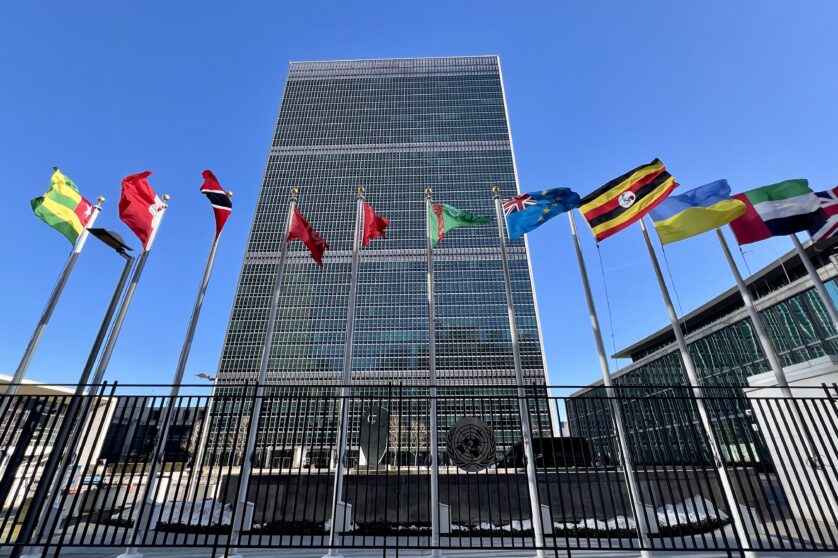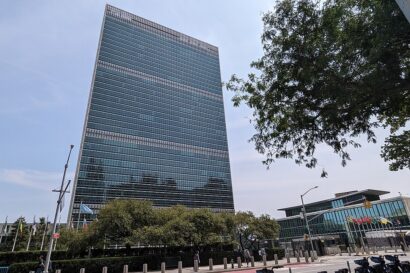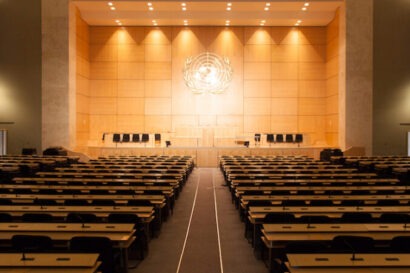Last month, I had the opportunity to observe the “organizational session” of the intergovernmental negotiating committee to draft a United Nations Framework Convention on International Tax Cooperation and two early protocols. As the Convention is on the agenda for this week’s ECOSOC Special Meeting on International Cooperation in Tax Matters, I’d like to share some reflections on the February meeting.
Contrary to its name, last month’s organizational session was not a mundane discussion of practical organizational matters. After a new bureau was elected and the dust following the dramatic exit of the United States from the negotiations had settled, most of the energy was spent on a single topic: reaching a compromise on how the negotiating committee would reach its decisions.
Continuing a pattern that started during the last week of the Second session of last year’s ad-hoc committee, the amount of public debate was reduced as almost half of the time was used for informal consultations to reach such a compromise. In contrast, surprisingly little discussion was needed to settle the other big point on the agenda, namely the topic of the second early protocol (the topic of the first early protocol was decided last August: “taxation of income from cross-border services in an increasingly digitalized and globalized economy”). In the remainder, I will look at both decisions in detail and analyse what they mean for the way forward.
The long-awaited decision on decision-making: a good compromise?
The discussion around decision-making has been controversial from the start of the deliberations around the Framework Convention in 2022. Global North countries consistently argued that decisions should only be taken by consensus, whereas UN General Assembly rules allow for taking decisions by simple majority where consensus fails. The majority fall-back rule has been used on several occasions where negotiations on the convention have stalled, each time resulting in the global South group prevailing.
The starting point of the discussions during the organizational session last month was a proposal brought forward by Norway and Mexico, two countries which have attempted to mediate between the global South and the global North over the past few years. The proposal suggested taking decisions on substantive matters by a two-thirds majority (66.6% of countries) in case consensus fails, and other decisions with a simple majority. This was rejected by the African Group, which after first reaffirming its preference for simple majority (50%), eventually proposed voting by a three-fifths majority (60%) on decisions relating to a protocol, with decisions on the Convention itself still taken by simple majority. After several hours of informal deliberations, a compromise emerged around two-thirds majority voting on matters of substance relating to a protocol, whereas all other decisions (including the decision about whether something is a “matter of substance”) could be taken by a simple majority.
In addition to the compromise on numbers, other nuances of the text were negotiated. Global North countries managed to get language around “exhausting every effort in good faith to reach consensus” into the text, which appears stronger than the African group’s preferred wording of “make every effort to reach consensus”. However, the African group managed to include a reference to “taking into account the available timeframe for negotiations”, which qualifies this stronger language, because the time for exhausting every effort to reach consensus will be limited.
After the compromise was reached, I heard delegates from both sides say that they were unhappy with it – so all sides appear to have given ground. To further confirm this, the final compromise proposal was adopted by consensus, without needing a vote. An unsuccessful vote had been held just before on a proposal by five European countries to only take all decisions by consensus.
However, this compromise might only be temporary. Importantly, the agreed decision-making rule only applies to the work of the negotiating committee that will design the Convention and its first two protocols over the next three years. It does not determine how decisions by the eventual conference of the parties to the Convention itself would be reached, including with respect to future protocols. Since the negotiating committee can make decisions about the content of the Convention itself by a simple majority, that simple majority could still decide that future protocols be negotiated under a simple majority rule.
Nevertheless, the debate showed that even securing a simple majority is not guaranteed for leading proponents of the convention in the global South. During the organizational session, several G77 countries outside the African Group did not endorse the latter’s preference for simple majority voting but instead pushed for a compromise. While a large group of the global South shared the goal of initiating intergovernmental tax negotiations to the UN, there may be more divergences on questions of substance and process going forward. Indeed, the two-thirds rule may shield the African group from being overruled if the global North manages to join forces with some Latin American or Asian G77 countries on certain questions.
Dispute resolution and prevention as second early protocol: An uncontroversial matter?
The decision on the topic of the second early protocol to be negotiated over the next three years was quick: some African and Asian countries expressed a preference for working on illicit financial flows but were quick to say that they were flexible. Brazil, Colombia and a few others pushed for work on high net-worth individuals, but not very strongly either. When European countries stated a strong preference for “dispute resolution and prevention”, other countries were quick to agree, mentioning that they perceived the topic as less conflictual and less distributional in nature.1
In between the sessions and at a workshop ICTD organized together with IISD on the evening of the second day of the Session, there was a lot of discussion around how the negotiation of the protocols could be approached. The UN Secretariat published a document on Tuesday 4 February, which outlines options for the four priority topics, illustrating the breadth of potential approaches. It is evident that further evaluations need to be done over the coming months to find the best approach to the negotiations. On cross-border services, ideas revolve around a multilateral approach to digital services taxes or a revival of formulary apportionment of MNEs’ net income, which has been part of the stalled pillar 1 Amount A. (For a more detailed analysis, read my colleague Florian Dierich’s forthcoming blog.)
On dispute prevention and resolution, several ideas have been previously floated, ranging from improvements to existing dispute resolution and prevention mechanisms (e.g., MAP, arbitration, APAs) to establishing multilateral mechanisms that could also rule on disputes arising between countries that do not have a bilateral tax treaty or that do not concern individual taxpayers (e.g., whether a country’s tax practices should be considered as “harmful” or not). It also needs to be clarified whether the protocol would also (or even exclusively, a wish Switzerland expressed in its closing statement) relate to disputes that concern the application of the framework convention.
It has been amply documented that existing mechanisms to resolve disputes on cross-border tax issues are unsatisfactory, especially for lower-income countries. While improving them may bring systemic benefits, doing so would not be purely a technical matter: it would also have some distributional consequences. For instance, in the research I conducted for my PhD thesis, I found that because of a lack of capacity and/or access to databases with comparable data, revenue administrations sometimes undertake transfer pricing assessments that only approximate rather than fully implement international standards, and subsequently negotiate settlements with taxpayers. Such practices probably allow tax administrations to collect more than they would receive if forced by the courts to interpret international standards strictly. They are only possible, therefore, because access to courts or other dispute resolution mechanisms is often not straightforward. Improving access to such mechanisms might be beneficial for investors, but could result in less tax revenue for some countries, unless capacity is built up or rules – in particular on transfer pricing – are so much simplified that even countries with very limited capacity can effectively apply them.
It might therefore be worthwhile to first address dispute prevention which is also included in the scope of this protocol. While established mechanisms like advance pricing agreements and advance rulings have proven effective in countries that have been able to implement them, many lower income countries are not using them yet because they need to deploy their scarce resources on audits. Hence, it may be more fruitful to work on mechanisms that simplify the application of existing standards. Multilaterally determining transfer pricing outcomes for specific types of transactions or sectors might be an option (in the spirit of Pillar 1 Amount B, which however may not have achieved its aim of significant simplification) or adopting even simpler formulaic approaches. Alternatively, establishing a multilateral database of geographically representative comparable data that could be made freely available or at a lower cost than commercial databases might prevent some disputes that currently occur in lower income countries.
If countries decide to use the protocol on dispute resolution to mainly develop a mechanism for disputes arising under the Framework Convention, an interesting interaction might arise between the negotiation of that protocol and the negotiation of the Framework Convention. In the debate on decision-making, some of the global North countries expressed a fear that more substantive content would be introduced in the Convention itself rather than in the protocol given that decisions on the Convention can be taken by simple majority.
Whether that will really happen or not, the force of any commitment adopted under Framework Convention likely depends on its dispute resolution system. Let’s assume countries decide to include a principle on respecting other countries’ sovereignty in tax matters in the Framework Convention (as suggested in the ToR). Could a signatory state initiate a dispute against another state if it deems that this state does not respect its sovereignty in tax matters? And if a decision is reached, how could it be enforced? All this depends on the scope of the dispute resolution provisions adopted in the protocol.
The fact that countries were able to settle two pressing questions is a positive signal for the road ahead. Nevertheless, much work needs to be done in the coming months in figuring out concrete proposals. As I’ve outlined in this blog and in my recent paper, there are different options for the way forward, both technically and politically speaking. Hard choices will have to made!
Watch now
In this video, Frederik Heitmüller summarises his key reflections


